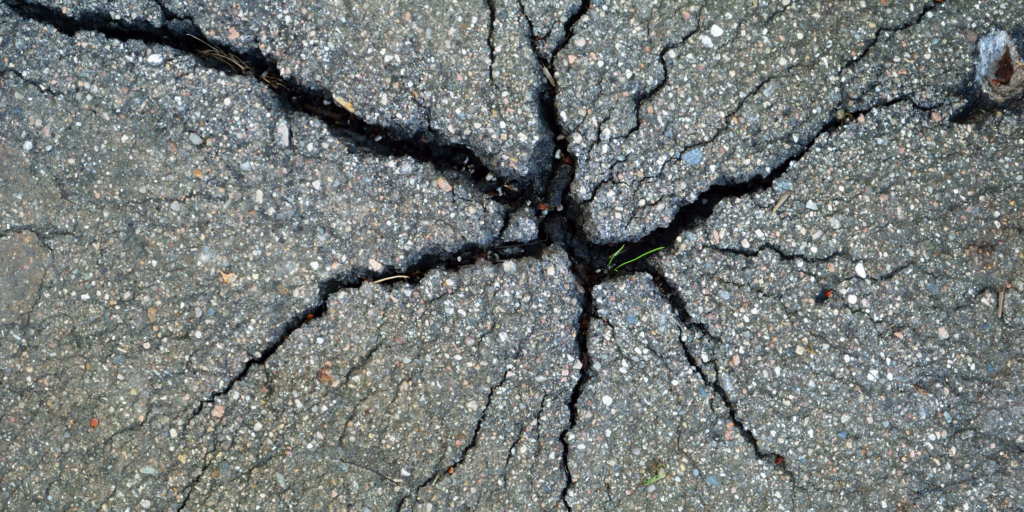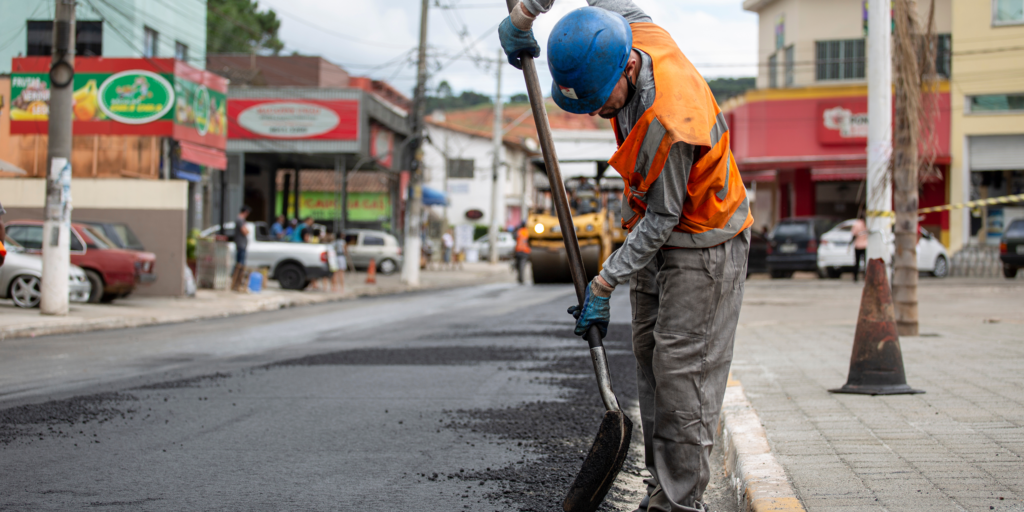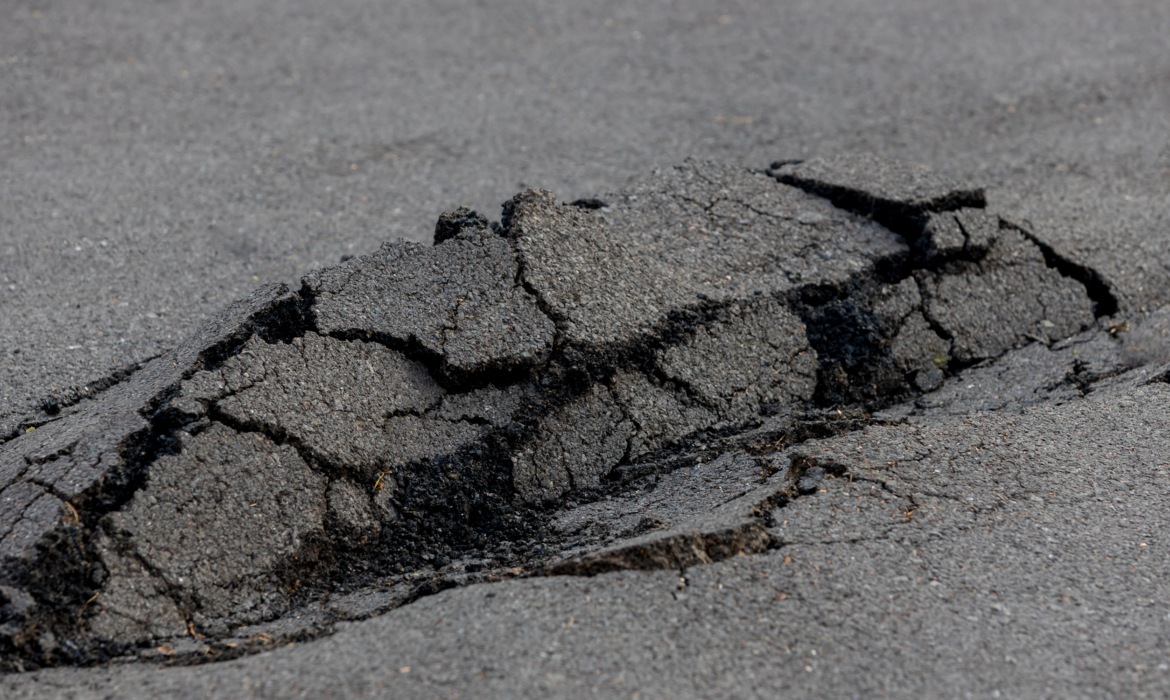Understanding asphalt pavement’s hidden adversaries may not be on your to-do list, but it’s vital. Imagine driving down a road or pulling into a parking lot when your car jolts painfully. What may be damaging to our cherished surfaces? The problem is sly alligator cracking. We’ll explore alligator cracking’s causes, effects, prevention, and new restoration methods.
Understanding Alligator Cracking in Asphalt Pavement
Have you seen asphalt pavement with detailed alligator-like patterns? It’s alligator cracking, buddy. This degradation has been linked to cracks like a web or a reptile’s scales.
But what produces these strange cracks? Structural failure is the root cause of alligator cracking. Heavy traffic and environmental factors like temperature variations and moisture seepage damage asphalt pavement over time. Stress builds up in the layers, causing fractures and alligator-like patterns.
Alligator cracking targets everyone. All surfaces are vulnerable to it: roads, highways, and parking lots. These unsightly fissures threaten car suspension systems and our transportation infrastructure’s safety and beauty.

Prevention is crucial to fighting this dangerous threat. Asphalt pavement needs regular inspections to spot problems before they become alligator cracks. Maintenance methods like sealcoating and crack sealing can prevent moisture intrusion and damage. Prevention may not always work. Innovative restoration methods are used for significant alligator cracking. Infrared patching is a cost-effective approach to repair damaged areas without sacrificing quality or longevity.
Causes of Alligator Cracking
Alligator cracking, or fatigue cracking, is widespread on asphalt pavement. So named because it cracks like alligator scales. What causes this ugly and harmful phenomenon?
Poor pavement design causes alligator cracking. When pavement cannot handle strong traffic or environmental pressures, cracks may form. Water entering the layers beneath the surface might weaken them and cause cracks due to poor drainage.
Substandard construction is another factor. If improper materials are utilized during installation or compaction and grading problems occur, weak areas might emerge. Alligator cracking also depends on age and wear. Asphalt pavements become brittle and less flexible with age, making them crack under pressure.
Extreme heat can worsen this. Stress cracks result from asphalt expansion and contraction due to freezing and thawing. For road authorities and property owners to successfully address these problems, they must invest in well-designed approaches during construction and ensure frequent maintenance checks.
The Impact of Alligator Cracking on Roads and Parking Lots
Fatigue cracking, or alligator cracking, can damage roadways and parking lots. The pavement distress is named for its interwoven fissures that mimic alligator skin. Alligator cracks challenge drivers and pedestrians. First and foremost, these cracks weaken the pavement, making it more vulnerable to heavy traffic and weather.
Uneven surfaces may degrade road safety and increase accident risk. Alligator cracking causes safety issues and cosmetic damage to roads and parking lots. Cracked pavements deter customers and lower commercial property values. Alligator cracking raises maintenance expenses for municipalities and enterprises that maintain paved surfaces. To prevent additional damage and maintain smooth driving, regular repairs are needed. Alligator cracking endangers safety, degrades aesthetics, and costs public infrastructure agencies and private property owners.
Prevention and Maintenance Techniques for Alligator Cracking
Alligator cracking on the asphalt pavement requires prevention and maintenance. Take preventative measures to extend the life of your road or parking lot and avoid costly repairs.
Regular sealcoating works. A protective coating is applied to the surface to block UV radiation, water, and chemicals. Sealcoating your pavement prevents cracks and improves its appearance. Also vital for prevention is good drainage. Standing water can undermine asphalt layers, causing alligator cracking. Ensure your surface has adequate drainage to reduce this risk.
Early distress detection requires regular inspections. Cracks should be repaired before they become potholes or alligators. Proper crack sealing with appropriate materials can stop further damage. Regular sweeping and crack filling will also help avoid alligator cracking. Remember that prevention may not always work. Professional maintenance tailored to your needs is vital for longevity and safety.
Innovative Solutions for Repairing Alligator Cracks
Traditional asphalt pavement alligator crack repair methods may not be the most effective or long-lasting. Innovative methods can tackle this issue, thankfully.
One solution is polymer-modified asphalt emulsion. This new material uses asphalt cement and polymers to make it more robust and flexible for heavy traffic and temperature changes. Applying this emulsion to damaged areas fills gaps and prevents cracking.
Infrared thermal bonding is another novel method. This approach uses an infrared heater to soften the damaged pavement so it may be raked out and recompacted. This technique heals cracks and strengthens the surrounding region, preventing future damage.
Crack sealing with rubberized asphalt or joint sealants can also cure alligator cracks cheaply. These materials are flexible and sticky, so they can expand and contract with changing temperatures without cracking or losing effectiveness.
Some companies repair alligator cracks using cold-mix recycling or warm-mix asphalt. These technologies use recyclable materials or less energy while producing high-quality outcomes.
These novel approaches to asphalt pavement alligator cracking repair ensure resilience and lifespan. These pavement repair innovations can help us maintain our roads and parking lots for years without breaking the budget!
The importance of Regular Inspection and Maintenance
The integrity of asphalt pavement requires regular inspections and maintenance. Check for damage or degradation often to spot problems early and prevent them from deteriorating. This proactive strategy saves time and money over time.
Alligator cracking, potholes, and rutting should be checked during inspections. Maintenance may include crack sealing, sealcoating, or patching.

Addressing these concerns quickly can extend the life of your pavement and improve driving. Missing inspections and upkeep can cause structural breakdowns or costly repairs.
Regular maintenance prevents damage and improves the appearance of the pavement. A clean surface boosts curb appeal and impresses clients. Consider working with an asphalt repair and maintenance business to keep up with inspections and maintenance. They can effectively examine your pavement’s state and offer relevant measures based on its needs.
Routine checks should be done at least once a year, but climate and traffic may require more frequent inspections.
Conclusion
Asphalt pavements are vulnerable to hidden alligator cracking. Effective maintenance and prevention require an understanding of this type of cracking’s causes and effects.
Poor construction, overloading, drainage, and aging pavement create alligator cracking. These causes can cause linked fractures that resemble alligator skin, hence the name.
The effects of alligator cracking are significant on roads and parking lots. It weakens the pavement, making it more vulnerable to water penetration, high traffic, and extreme weather. Alligator cracks can easily become potholes or pavement breakdowns if neglected.
Avoiding alligator cracking requires good base preparation and asphalt thickness design. To spot problems before they become major fissures, regular inspections are necessary.
Crack sealing or patching are used to maintain alligator cracks, depending on severity. Traditional remedies may only provide temporary relief because they don’t address the root causes of the fissures.
Fortunately, modern methods enable longer-lasting alligator-cracked pavement repairs. Advanced technologies, including polymer-modified overlays and fabric-reinforced systems, can fortify weaker sections and increase asphalt surface life.
Anti-alligator cracking requires regular inspections and preventive maintenance. Early intervention can prevent minor issues from becoming significant ones and make roadways and parking lots safer for everyone.

